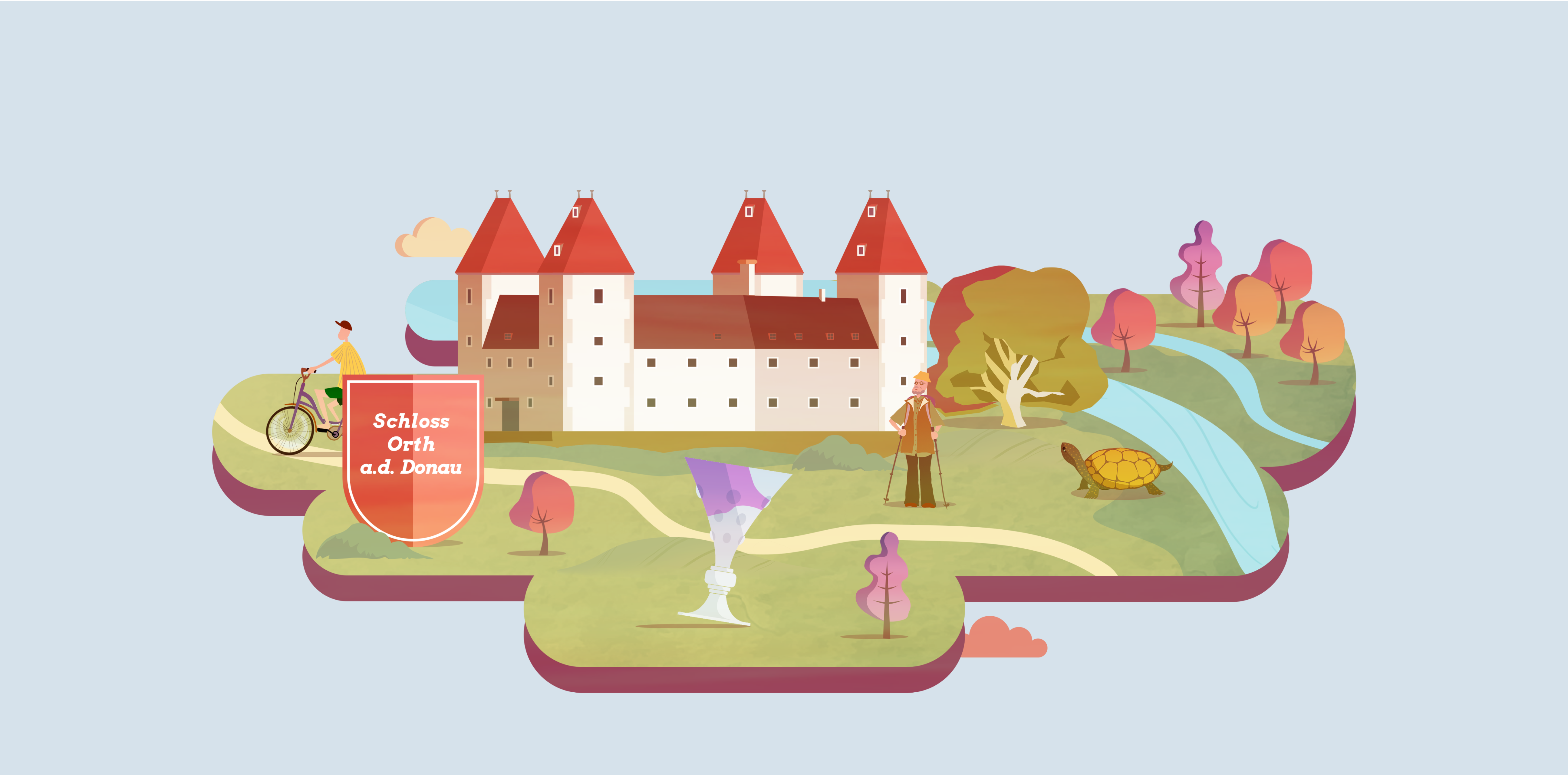
The joy of
country living
at Schloss Orth
Schloss Orth and the Danube wetlands: feel the past at every turn. Enjoy nature like nowhere else. It can be wonderfully quiet in the alluvial forest, or wonderfully loud when the forest dwellers begin their concert. What was once the preserve of Crown Prince Rudolf and high society at the end of the 19th century can now be experienced by visitors to Schloss Orth every day.
The stone witness
„The call of the tawny owl, the long-drawn-out whistle of the warbler, the hoarse screech of the night-fishing heron and the whirring wings of the endless owl migration returning from the fields and small streams to the meadows disturb the majestic peace of the beautiful September night“: the birdlife of the Danube wetlands around Schloss Orth, described by Crown Prince Rudolf, Empress Sisi’s only son. A keen naturalist and bird lover, he chose Schloss Orth as his hunting lodge in the 1880s.
How often might he have climbed the hollow stone spiral staircase to the tower room to watch and study the birds, including the imperial eagles? The historically significant three-storey Renaissance spiral staircase was built around 1550 by the court architect Johann Tscherte. This architectural gem, consisting of 66 stone steps and a 66 cm staircase eye, can only be found in a similar but larger and more dilapidated form in Dolni Kounice in the Czech Republic. Following extensive restoration, the spiral staircase is once again open to visitors to the castle.
Head for the countryside
Life around Schloss Orth has always been characterised by its proximity to the unique wetland landscape. When Crown Prince Rudolf and his entourage travelled from Vienna, they not only hunted, but also went on expeditions along the river and into the wilderness of the forests. The Emperor’s son recorded his observations of the river landscape from Vienna to the Hungarian border in detailed descriptions in the so-called „Crown Prince’s Work“, which also beautifully describes the Danube floodplains around Orth. Rudolf was fond of spending time at Schloss Orth and would go there by boat or take a long ride in his carriage.
Today, Schloss Orth is home to the visitor centre of the Donau-Auen National Park. Efforts are still being made to unlock the secrets of the floodplain and its inhabitants, and to share them with visitors on excursions with national park rangers. The national park stretches from Vienna to the Slovakian border and protects the fragile floodplain landscape along the Danube. It is also home to many rare and protected species.
Tips

Castle Island
The Castle Island's floodplain adventure park has a walk-in underwater viewing station, where you can take a tour and discover the characteristic flora and fauna of the river landscape.

Observation tower
After climbing 107 steps, you reach the top and are rewarded with a wonderful panoramic view. There are changing special exhibitions and displays of white storks, jackdaws, kestrels and species of bats that live in and around the Schloss Orth. You will even find screens at the observation tower that give you a live view of the nesting boxes and eyrie.
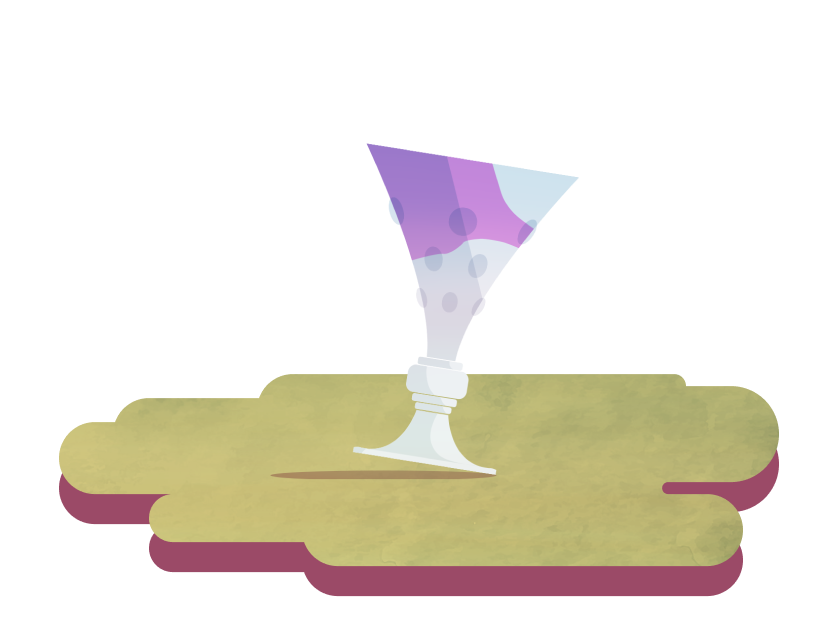
The museumORTH
The museumORTH on the 2nd floor of Schloss Orth shows the history of the Danube community in a large photo album. The presentation is complemented by annually changing special exhibitions.
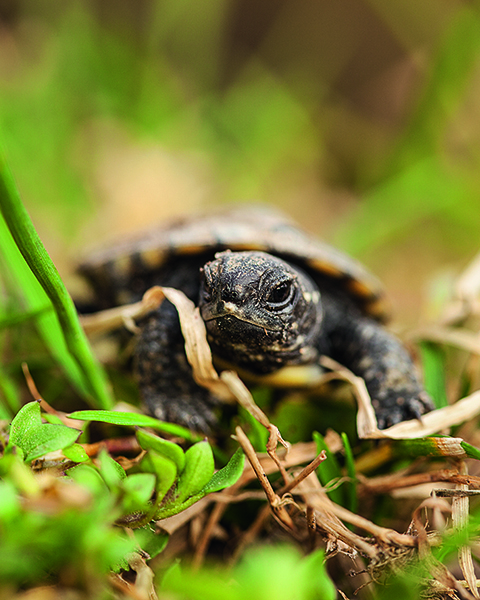
Where do our pond turtles come from?
European pond turtles are the only naturally occurring turtle species in Austria. Their natural habitat includes slow-flowing rivers, quiet oxbow lakes, ponds and pools with dense vegetation. They are widespread in the Donau-Auen National Park.
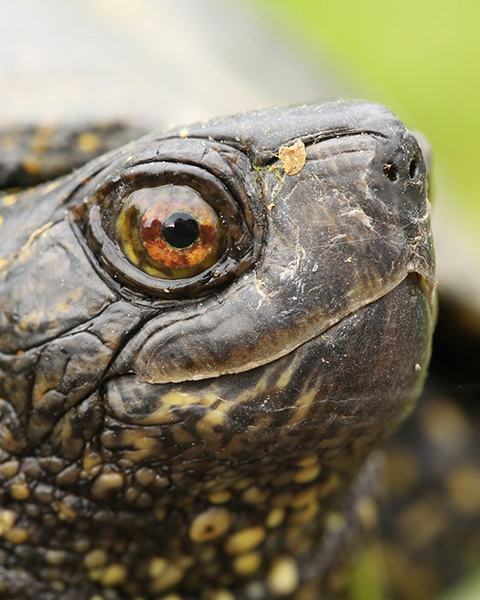
What do the pond turtle's eyes reveal?
With European pond turtles, it is easy to tell the males from the females: the iris of the males is orange, that of the females yellow.
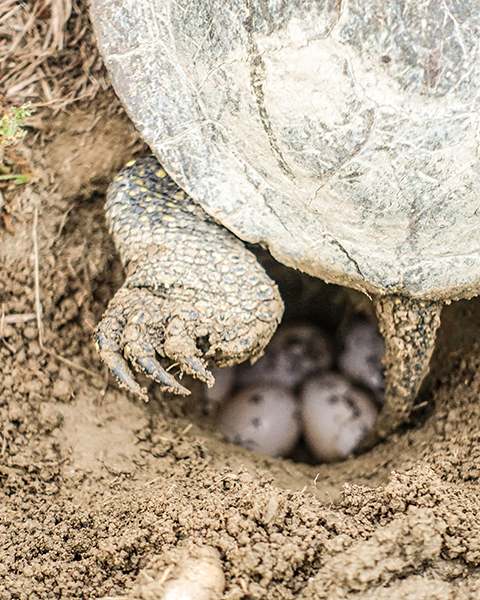
Do you know who hatches a turtle's eggs?
The sun hatches the eggs of the European pond turtle! The temperature of the clutch determines whether an egg will develop into a male or a female.
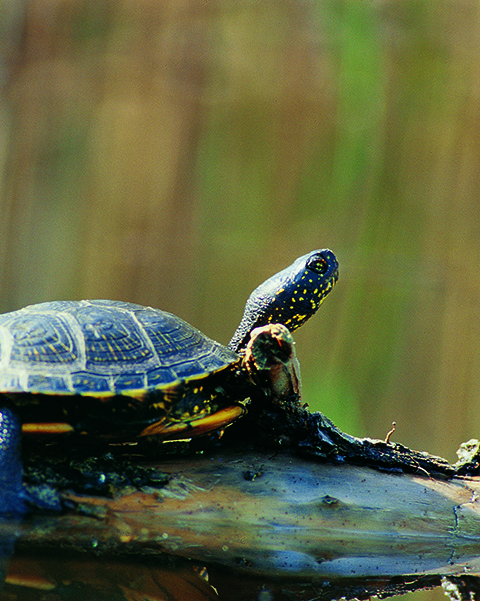
Do you know what pond turtles eat?
The European pond turtle only hunts in the water and eats its prey right there: it is a carnivore and feeds on small fish, frogs, worms and aquatic insects.
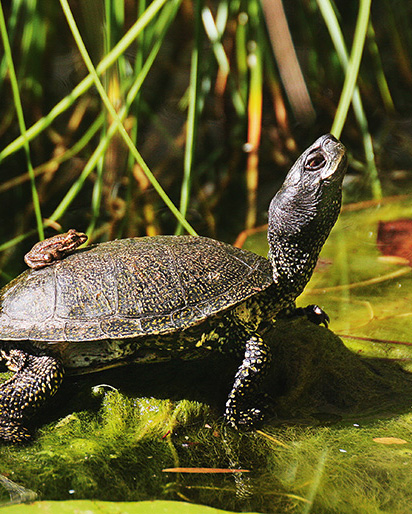
Do you know how pond turtles get through the winter?
The European pond turtle does not hibernate, but enters a state of dormancy. It does this by burying itself in the mud and breathing through its skin.